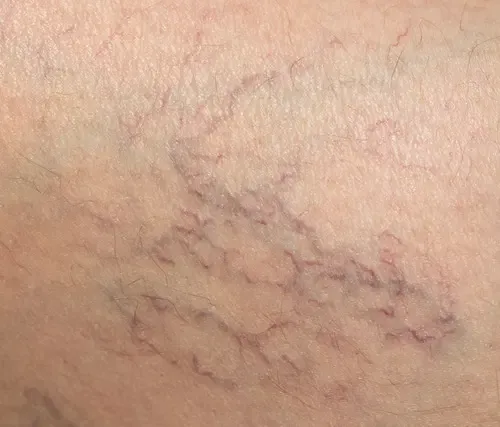Qu'est-ce qu'un laser vasculaire ?
Les lasers sont utilisés en dermatologie depuis une trentaine d’années, et les lasers vasculaires ont été parmi les premiers utilisés.
Il s’agit d’une source d’énergie émettant une lumière de longueur d’onde spécifique, absorbée par
l’hémoglobine des globules rouges. Transformée en chaleur, elle provoque un caillot et une sclérose de la paroi du vaisseau dans les 4 à 6 semaines qui suivent.
Le traitement des varicosités des jambes
Le nombre des séances dépend du nombre de varicosités à traiter, de leur couleur et de leur diamètre, avec un espace entre les séances de 6 semaines au moins.
Une reprise normale des activités habituelles est possible dans 4 jours qui suivent.
Dans tous les cas il faut éviter le soleil.
Une amélioration considérable des varicosités traitées apparait dans les 2 à 6 semaines suivantes. Il faut parfois plusieurs mois pour atteindre le résultat définitif. Avec le temps, de nouvelles varicosités peuvent devenir visibles, qu’on traitera de la même façon.
Les suites
Dans la majorité des cas on note peu ou aucun effet secondaire, si ce n’est un léger rougissement, un gonflement local de la peau et une sensation de chaleur pendant quelques jours.
Des parties de vaisseaux plus larges peuvent noircir et rester douloureuses assez longtemps.
Si des croûtes se forment, une crème hydratante cicatrisante peut être recommandée par votre praticien.
Une hyperpigmentation post-inflammatoire peut survenir sur peaux foncées, et disparaît avec le temps.

